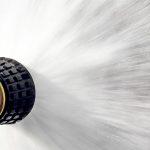Security Solution Maintenance & Upgrading
As with any technology, things evolve as time passes. The same goes for security solutions, such as the analog to IP switch and the newer 4K video. Unfortunately with time, performance and reliability also starts to degrade. There will be a time in every products life cycle, where an upgrade is needed. The time it takes for this upgrade to be required depends on a variety of circumstances. Regular maintenance and cleaning on all the systems, as well as the environment the device is placed in, all play a role in the longevity of devices. Here we discuss some of the upgrades that can be done to a system, as well as some solutions on increasing the longevity and reliability of your devices.
Servers
Servers are the heart of most security solutions and need to be maintained regularly. The average life cycle of a server is said to be around 5 years. The older a server is, the more likely it is that an entire storage array will break, or major components, such as processors and motherboards can also quit unexpectedly. These types of failures can cause quite a bit of trouble, and may not be discovered right away either.
Servers should be maintained on a regular basis. Servers are air cooled most of the time, which means they cycle the air from your building through their casing in order to cool all of their components. This causes dust to build up and other debris to potentially get lodged in the air vents or air filters, which can hinder air flow and cause the device to overheat. An all inclusive maintenance plan should be established for servers. One that involves the cleaning and checking of all hardware components, but should also include the monitoring of software on the device, as well as regular updates and virus protection.
Upgrading Servers
Servers are usually upgraded along with all the cameras or the access control system in the building. In a matter of five years, the innovation and improvements on products makes upgrading a very wise decision. Not only will you benefit from further features and brand new devices, but you will also have new warranties on all the devices and have successfully mitigated the risk of premature device failure. Servers should be upgraded on a regular schedule, such as every 5 years. It takes time to build servers from scratch, which can be valuable business time if the previous server has already failed. Equipment failure should never be the trigger to upgrade a system, as restoring a failed system involved working against downtime, which can become a major security risk.
Switches & PoE
Most cameras, card readers and more all depend on PoE (Power over Ethernet). A technology that provides power via the same wire that also provides the data to the device. Power spikes and anomalies can cause these devices to not operate correctly, or even worse to fail. Regular maintenance and monitoring of the power that is output to each and every device is extremely essential to protect your investment. A single surge may not do much damage, but if it becomes a regular issue, your devices may fail one after another.
Larger switches that provide PoE power are also air cooled, just like servers. Ensuring the air flow is not blocked and there’s no dust within the casing is absolutely essential to keeping the device cool and operating properly. Depending on the switch, there may also be software running on the switch, which should also be updated regularly. This ensures the security and stable operation of the switch.
Upgrading of Switches & PoE Infrastructure
In the case of a normal switch, these devices are plug and play which won’t cause much downtime when they are being upgrades. Smart switches however need to be properly configured before they can be unleashed on your network. PoE also powers all the devices that are connected to the switches, which means a large part of your infrastructure may end up rebooting. Depending on the device this should not be a problem, but the devices functionality should be checked before leaving the site after the upgrade.
Surveillance Cameras
Surveillance cameras are great tools to see your business when you are away, and to mitigate the risk of break ins and theft on site. A failure of those cameras, depending on the application can go undetected and cause for an area to be unsecured for a while. In order to prevent this from happening regular maintenance should be performed on those cameras. Regardless of the ratings a camera may have, the seals can become brittle over time and cause for water to leak into the enclosure. Regular cleaning and a check up on all the seals should be performed to prevent exactly those issues from happening. Cameras also run software that is quite advanced. This software needs to be updated regularly and all performance logs should be reviewed regularly to ensure no issues are occurring.
Surveillance Upgrades
Upgrading surveillance solutions should be a regular budgeted expense. Instead of fixing cameras when one fails, the cameras should all be swapped on a regular basis. This will ensure that you have the latest technologies available, a high reliability surveillance environment and product warranties for most of the cycle. When upgrading surveillance cameras without upgrading the surveillance server, which will only be recommended in certain situations, the system should be swapped camera by camera, in order to minimize the downtime that is caused to each area.
When upgrading the entire solution, the server and the cameras, we recommend configuring the new server before touching anything else. From there the old camera connections can then be moved over to the new server once the camera has been swapped on the other end. This will ensure minimal downtime for the system and will still maximize your security during the project.
Access Control
Access control is usually run by hardware boards and includes a server for all the credentials and to keep an overview over the system. Regular maintenance is an absolute must for theses systems, as they can be a deciding factor of life and death in case of an equipment failure. Cleaning all the devices and regularly performing sample drills on the devices to ensure its emergency operations is absolutely crucial. There are also regular software updates that should be performed on the devices, in order to ensure they are fully secure and any bugs that may exist on the system are fixed.
Access Control Upgrades
Upgrading access control solutions is a tad more tricky than all of the above solutions. Most likely with a new access control system, new key fobs or a new type of credentials will be supplied to the users. As such the system can’t be upgrades door by door, as some doors may require the old credentials and some may require the new, which can get quite confusing. The entire building will have to be disengaged from the access control, and the access control should then be activated once the new panel is ready for launch. An access control solution is arguably one of the most tricky devices to upgrade, and that is where timing is absolutely crucial.
Timing
Upgrading equipment involves a major scheduling problem. When upgrading any type of infrastructure on your network or servers, this should be done in the time when they are least needed. In the case of a network device or similar, the devices should be swapped at night or in the very early morning, to ensure that everything is up and running by the time the first few employees walk through the door. Most upgrading should be done at night in order to ensure minimal downtime, the least amount of interruptions and a better possibility to test all the new equipment and its compatibility with the old equipment. In the case of access control, the credentials of the users will have to either be distributed amongst the departments, or they will have to be read into the system in the case of biometrics.
How we can help
We keep an internal database of when we installed each and every solution that we have ever installed. With that we can help you stay up to date with little things such as UPS (Uninterruptible Power Supply) batteries, that should be changed every 3 years. As well as the larger solutions, such as upgrading servers etc. We have set intervals in which we recommend upgrades for all the devices that we integrate and can help you keep on top of the upgrading schedule within your organization. Once you decide you are ready for an upgrade, we will come in and perform the upgrades. We offer 24 hour scheduling solutions to make the upgrades that much easier for you.
We also offer regular maintenance for all of your devices. Having someone checking into all your devices on a regular basis is key to having a long product life without any troubles. We offer cleaning, hardware inspections, software upgrades, device monitoring and so much more to ensure your devices are performing at their best and are feeling good doing so. With our 24 hour schedule availability and regular schedules, we can set up a regular maintenance interval to keep your devices clean and performing well.
Get in Touch
Feeling as though your security solution is in need of an overhaul? No problem, let us help you find the right replacement and get it installed. We can also perform regular maintenance on solutions that we didn’t install. Feel free to contact us with any questions or comments. You can call us at any time at (403) 477-4800 or email us at [email protected].




